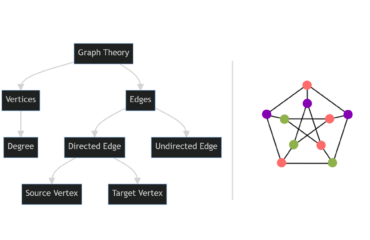The year 2024 is shaping up to be a transformative phase for the telecommunications industry, marked by a convergence of technological advancements and strategic initiatives. As the world hurtles toward greater connectivity and innovation, the top five trends for the telecom sector in 2024 are steering the industry towards unparalleled growth and adaptability.
- 5G Evolution and Expansion

5G technology is evolving and expanding, transitioning from initial deployments to more mature and widespread adoption. The networks aim for enhanced coverage, higher reliability, and improved performance. This expansion enables transformative applications across industries, from augmented reality to advanced remote healthcare services.
- IoT Integration and Proliferation

The integration of IoT into telecom networks is witnessing exponential growth in 2024. The proliferation of connected devices across various sectors, from smart cities and homes to industrial applications, drives the demand for robust and scalable IoT infrastructure. Telecom providers are accommodating diverse connectivity needs and ensuring seamless integration of these devices into their networks, thereby ensuring optimal Quality of Service (QoS) for enhanced user experiences and efficient network operations.
- AI & Automation in Network Management

In 2024, the telecom landscape is deeply influenced by the critical role of artificial intelligence (AI) and automation in network management. AI-driven analytics are revolutionizing the sector by facilitating predictive maintenance, automated network optimization, and intelligent resource allocation. This AI integration significantly bolsters network performance and reliability by swiftly identifying potential issues, proactively optimizing network elements, and dynamically allocating resources based on real-time demands. Additionally, automation within telecom infrastructures streamlines operations, curtailing manual intervention and markedly enhancing efficiency. This translates to improved service delivery, faster response times to network issues, and greater adaptability to the ever-evolving demands of modern telecommunications.
- No-code Configuration and Network Customization

The telecom industry in 2024 is embracing ‘no-code’ or low-code solutions, empowering non-technical users to configure and customize network services and applications easily. The telecom sector’s enthusiastic adoption of ‘no-code’ or low-code solutions stems from the necessity to democratize network configuration. This move was necessitated by the increasing complexity of telecom systems and the imperative to expedite service deployment while encouraging innovation. Enabling non-technical users to effortlessly configure and customize network services and applications through these solutions not only accelerates service rollout but also encourages a culture of innovation and facilitates agile responses to evolving market needs. This transformation fosters heightened flexibility and adaptability within telecom networks, ensuring they stay resilient and responsive in a rapidly changing landscape.
Top of Form
- Sustainability Initiatives in Telecom

Sustainability is a central focus in the telecom industry in 2024, spurred by heightened environmental awareness and global ambitions, including the aim to achieve net-zero emissions by 2030. Telco’s significant energy consumption, recognized for its detrimental environmental impact, demands immediate attention. In response, telecom providers are taking proactive measures by intensifying the integration of green technologies, optimizing energy utilization, and embracing eco-friendly practices throughout their network infrastructure. These proactive endeavors, steered by both consumer demand and regulatory directives, focus on mitigating carbon footprints, harnessing renewable energy sources, and deploying environmentally conscious equipment. Embracing sustainability not only contributes to diminishing energy consumption and operational expenses but also elevates Quality of Service (QoS) through the efficiencies driven by AI. By spearheading environmental responsibility, the industry positions itself as a vanguard in sustainability, paving the way for a more ecologically sustainable future.
Conclusion
The telecom industry’s trajectory in 2024 is one of continual evolution and adaptation, driven by the interplay of technological innovation and environmental responsibility. As the industry embraces transformative trends like 5G evolution, IoT integration, AI & automation, no-code solutions, and sustainability initiatives, it strides towards a future where connectivity, efficiency, and environmental consciousness converge to redefine the global telecom landscape. These trends, collectively, underscore the industry’s commitment to unparalleled growth, resilience, and sustainability while paving the way for a more connected and eco-conscious world for all.




